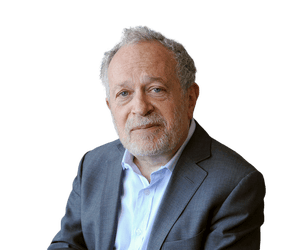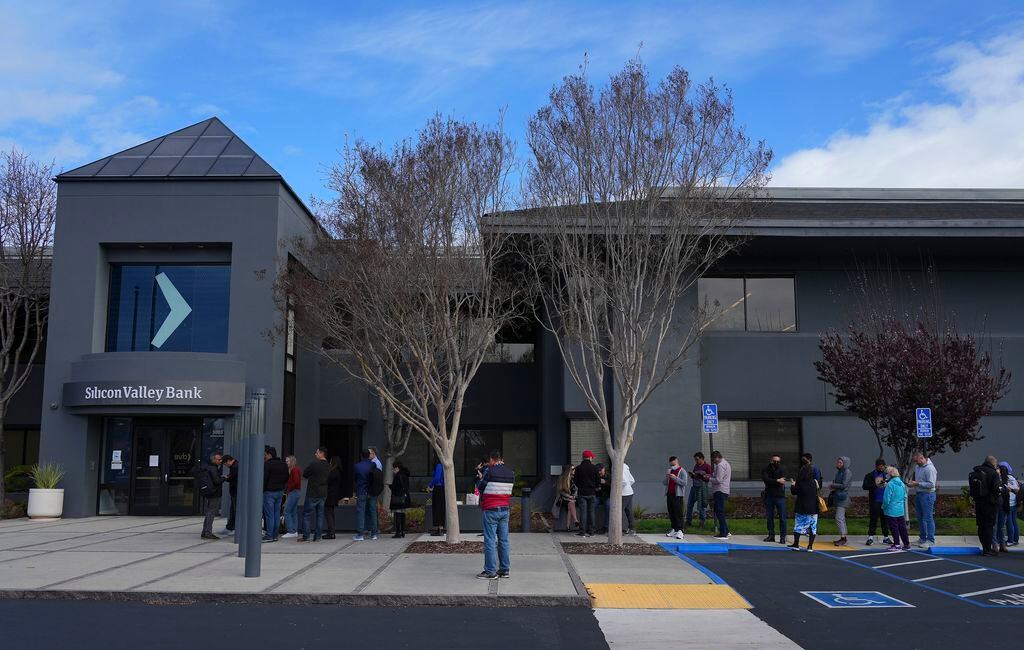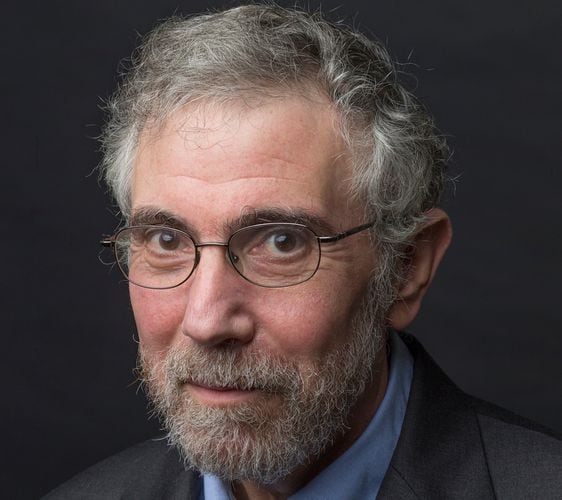When banks like Silicon Valley Bank collapse, money floods to bigger ones like JPMorgan. Clients know they’re ‘too big to fail’
Sun 19 Mar 2023
Robert Reich
Greg Becker, the former CEO of Silicon Valley Bank, sold $3.6m of SBV shares on 27 February, just days before the bank disclosed a large loss that triggered its stock slide and collapse. Over the previous two years, Becker sold nearly $30m of stock.
But Becker won’t rake in the most from this mess. Jamie Dimon, chair and CEO of JPMorgan Chase, the biggest Wall Street bank, will probably make much more.
That’s because depositors in small- and medium-sized banks are now fleeing to the safety of JPMorgan and other giant banks that have been deemed “too big to fail” because the government bailed them out in 2008.
Last Friday afternoon, the deputy treasury secretary, Wally Adeyemo, met with Dimon in New York and asked whether the failure of Silicon Valley Bank could spread to other banks. “There’s a potential,” Dimon responded.
Presumably, Dimon knew such contagion would mean vastly more business for JPMorgan. In a note to clients on Monday, bank analyst Mike Mayo wrote that JPMorgan is “battle-tested” in volatile markets and “epitomizes” how the largest US banks have shed risk since the 2008 financial crisis.
Recall that the 2008 financial crisis generated a gigantic shift of assets to the biggest Wall Street banks, with the result that JPMorgan and the other giants became far bigger. In the early 1990s, the five largest banks had accounted for only 12% of US bank deposits. After the crisis, they accounted for nearly half.
Robert Reich
Greg Becker, the former CEO of Silicon Valley Bank, sold $3.6m of SBV shares on 27 February, just days before the bank disclosed a large loss that triggered its stock slide and collapse. Over the previous two years, Becker sold nearly $30m of stock.
But Becker won’t rake in the most from this mess. Jamie Dimon, chair and CEO of JPMorgan Chase, the biggest Wall Street bank, will probably make much more.
That’s because depositors in small- and medium-sized banks are now fleeing to the safety of JPMorgan and other giant banks that have been deemed “too big to fail” because the government bailed them out in 2008.
Last Friday afternoon, the deputy treasury secretary, Wally Adeyemo, met with Dimon in New York and asked whether the failure of Silicon Valley Bank could spread to other banks. “There’s a potential,” Dimon responded.
Presumably, Dimon knew such contagion would mean vastly more business for JPMorgan. In a note to clients on Monday, bank analyst Mike Mayo wrote that JPMorgan is “battle-tested” in volatile markets and “epitomizes” how the largest US banks have shed risk since the 2008 financial crisis.
Recall that the 2008 financial crisis generated a gigantic shift of assets to the biggest Wall Street banks, with the result that JPMorgan and the other giants became far bigger. In the early 1990s, the five largest banks had accounted for only 12% of US bank deposits. After the crisis, they accounted for nearly half.
After this week, they’ll be even bigger.
Their giant size has already given them a huge but hidden effective federal subsidy estimated to be $83bn annually – a premium that investors and depositors willingly pay to these enormous banks, in the form of higher fees and lower returns, precisely because they’re considered too big to fail.
Some of this hidden federal subsidy goes into the pockets of bank executives. Last year alone, Dimon earned $34.5m.
Dimon was at the helm in 2008 when JPMorgan received $25bn from the federal government to help stem the financial crisis which had been brought on largely by the careless and fraudulent lending practices of JPMorgan and other big banks. Dimon earned $20m that year.

Their giant size has already given them a huge but hidden effective federal subsidy estimated to be $83bn annually – a premium that investors and depositors willingly pay to these enormous banks, in the form of higher fees and lower returns, precisely because they’re considered too big to fail.
Some of this hidden federal subsidy goes into the pockets of bank executives. Last year alone, Dimon earned $34.5m.
Dimon was at the helm in 2008 when JPMorgan received $25bn from the federal government to help stem the financial crisis which had been brought on largely by the careless and fraudulent lending practices of JPMorgan and other big banks. Dimon earned $20m that year.

In March 2009 Barack Obama summoned Dimon and other top bank executives to the White House and warned them that “my administration is the only thing between you and the pitchforks”.
But the former president never publicly rebuked Dimon or the other big bankers. When asked about the generous pay Dimon and other Wall Street CEOs continued to rake in, Obama defended them as “very savvy businessmen” and said he didn’t “begrudge peoples’ success or wealth. That’s part of the free market system.”
What free market system? Taxpayers had just bailed out the banks, and the bank CEOs were still raking in fat paychecks. Yet 8.7 million Americans lost their jobs, causing the unemployment rate to soar to 10%. Total US household net worth dropped by $11.1tn. Housing prices dropped by a third nationwide from their 2006 peak, causing some 10 million people to lose their homes.
Rather than defend CEO paychecks, Obama might have demanded, as a condition of getting bailed out, that the banks help underwater homeowners on Main Street.
Another sensible proposal would have been to let bankruptcy judges restructure shaky home mortgages so that borrowers didn’t owe as much and could remain in their homes.
Yet the big banks, led by Dimon, opposed this. They thought they’d do better by squeezing as much possible out of distressed homeowners, and then collecting as much as they could on foreclosed homes.
In April 2008, Dimon and the banks succeeded: the Senate voted down a bill that would have allowed bankruptcy judges to modify mortgages to help distressed homeowners.
In the run-up to the 2020 election, Dimon warned against policies that Bernie Sanders and Alexandria Ocasio-Cortez were then advocating, including Medicare for All, paid sick leave and free public higher education. Dimon said they amounted to “socialism”.
“Socialism,” he wrote, “inevitably produces stagnation, corruption and often worse – such as authoritarian government officials who often have an increasing ability to interfere with both the economy and individual lives – which they frequently do to maintain power,” adding that socialism would be “a disaster for our country”.
Dimon also warned against “over-regulation” of banking, cautioning that in the next financial crisis, big institutions like JPMorgan won’t be able to provide the lending they did during the last crisis.
“When the next real downturn begins,” he wrote, “banks will be constrained – both psychologically and by new regulations – from lending freely into the marketplace, as many of us did in 2008 and 2009. New regulations mean that banks will have to maintain more liquidity going into a downturn, be prepared for the impacts of even tougher stress tests and hold more capital.”
But the former president never publicly rebuked Dimon or the other big bankers. When asked about the generous pay Dimon and other Wall Street CEOs continued to rake in, Obama defended them as “very savvy businessmen” and said he didn’t “begrudge peoples’ success or wealth. That’s part of the free market system.”
What free market system? Taxpayers had just bailed out the banks, and the bank CEOs were still raking in fat paychecks. Yet 8.7 million Americans lost their jobs, causing the unemployment rate to soar to 10%. Total US household net worth dropped by $11.1tn. Housing prices dropped by a third nationwide from their 2006 peak, causing some 10 million people to lose their homes.
Rather than defend CEO paychecks, Obama might have demanded, as a condition of getting bailed out, that the banks help underwater homeowners on Main Street.
Another sensible proposal would have been to let bankruptcy judges restructure shaky home mortgages so that borrowers didn’t owe as much and could remain in their homes.
Yet the big banks, led by Dimon, opposed this. They thought they’d do better by squeezing as much possible out of distressed homeowners, and then collecting as much as they could on foreclosed homes.
In April 2008, Dimon and the banks succeeded: the Senate voted down a bill that would have allowed bankruptcy judges to modify mortgages to help distressed homeowners.
In the run-up to the 2020 election, Dimon warned against policies that Bernie Sanders and Alexandria Ocasio-Cortez were then advocating, including Medicare for All, paid sick leave and free public higher education. Dimon said they amounted to “socialism”.
“Socialism,” he wrote, “inevitably produces stagnation, corruption and often worse – such as authoritarian government officials who often have an increasing ability to interfere with both the economy and individual lives – which they frequently do to maintain power,” adding that socialism would be “a disaster for our country”.
Dimon also warned against “over-regulation” of banking, cautioning that in the next financial crisis, big institutions like JPMorgan won’t be able to provide the lending they did during the last crisis.
“When the next real downturn begins,” he wrote, “banks will be constrained – both psychologically and by new regulations – from lending freely into the marketplace, as many of us did in 2008 and 2009. New regulations mean that banks will have to maintain more liquidity going into a downturn, be prepared for the impacts of even tougher stress tests and hold more capital.”

But, as demonstrated again this past week, American capitalism needs strict guardrails. Otherwise, it is subject to periodic crises that summon bailouts.
The result is socialism for the rich while everyone else is subject to harsh penalties: bankers get bailed out and the biggest banks and bankers do even better. Yet average people who cannot pay their mortgages lose their homes.
Meanwhile, almost 30 million Americans still lack health insurance, most workers who lose their job aren’t eligible for unemployment insurance, most have no paid sick leave, child labor is on the rise and nearly 51m households can’t afford basic monthly expenses such as housing, food, childcare and transportation.
Is it any wonder that many Americans see the system as rigged against them? Is it surprising that some become susceptible to dangerous snake-oil peddled by power-hungry demagogues?

Robert Reich, a former US secretary of labor, is professor of public policy at the University of California, Berkeley, and the author of Saving Capitalism: For the Many, Not the Few and The Common Good. His new book, The System: Who Rigged It, How We Fix It, is out now. He is a Guardian US columnist. His newsletter is at robertreich.substack.com
Paul Krugman: Three and a half myths about bank bailouts
The fallout from banking problems has made a murky economic situation even murkier.

(Jim Wilson | The New York Times) A line of clients outside the entrance to Silicon Valley Bank's headquarters in Santa Clara, Calif., March 13, 2023. The FDIC and other entities will protect most people’s bank and brokerage balances; but it’s as good a time as any for consumers to create other backstops.
By Paul Krugman | The New York Times
| March 18, 2023
Last weekend, U.S. policymakers went all-in on bailing out two medium-size banks: Silicon Valley Bank and Signature Bank.
And yes, they were bailouts. I wish the Biden administration weren’t trying to claim otherwise. Yes, stockholders were cleaned out. But legally, deposits are insured only up to $250,000; by choosing to make all depositors whole, the feds have done holders of big accounts a major favor.
It’s true that losses, if any — it’s not clear whether either bank was insolvent as opposed to simply lacking the ready cash to handle a bank run — won’t be made up with higher conventional taxes; the money is coming from the Federal Deposit Insurance Corp., which will recover funds, if necessary, by imposing higher fees on banks. But these fees will be passed on to the public, so taxpayers are de facto on the hook.
But was it a bad decision? I’ve heard four basic kinds of criticism. One is ridiculous. Two are dubious. But the last one has me a bit worried, although I think it’s probably wrong.
Let’s start with the silly stuff. On the right side of the political spectrum, many have quickly rallied around the claim that SVB failed because it was excessively woke — which is only marginally less ludicrous than claiming that wokeness somehow causes train derailments.
For what it’s worth, no, SVB didn’t stand out from other banks in its concern for diversity, the environment and so on. And banks have been going bust for centuries, since long before human resources departments began including boilerplate language about social responsibility in their mission statements. So the talk about wokeness tells us nothing about bank failures — but a lot about the intellectual and moral bankruptcy of the modern American right.
On to more serious criticism. There is a reasonable argument, one that I largely agree with, to the effect that the failure of SVB didn’t pose a systemic threat in the way that the failures of financial institutions beginning with Lehman Brothers did in 2008. So why rescue the depositors?
Well, one answer is that, like it or not, Silicon Valley Bank had come to play a key role in what you might call the financial ecosystem of the technology sector. Notably, if depositors had lost access to their money, even temporarily, this would apparently have left many technology companies unable to meet their payrolls and pay their bills — which might have done lasting damage. True, killing the crypto industry would be a public service, but there’s also a lot of good stuff that might get hurt.
In this sense, the bailout of SVB was something like the bailout of General Motors and Chrysler in 2009, which was also justified on the grounds that it would preserve a crucial piece of the economic ecosystem. And although the auto bailout was harshly criticized at the time, in retrospect, it looks like the right call, even though it ended up costing taxpayers billions.
A third criticism is the claim that the feds have now established the principle that all deposits are effectively insured without imposing correspondingly tighter regulation on what banks do with those deposits — creating an incentive for irresponsible risk-taking. But policymakers explicitly didn’t guarantee all deposits everywhere, and at least so far, we’re seeing an outflow of funds from smaller banks to more tightly regulated large banks. You may not like this; whatever else you may say about big financial institutions, they aren’t lovable. But on balance, we seem to be seeing the financial system move toward reduced, not increased, risk-taking.
Which brings me to the criticism I take seriously, although I think it’s probably wrong: claims that the bank failures will undermine efforts to control inflation.
It’s true that the bank blowups have caused investors to rethink the future course of Federal Reserve policy: A rate hike at the next Fed meeting, which seemed to be a done deal, now looks uncertain, with markets now pricing in the possibility of a rate cut and two-year interest rates (a good indicator of expected Fed policy over the near future) plunging. And some sensible people I talk to are now warning about financial dominance, in which the Fed puts a higher priority on protecting Wall Street than on stabilizing inflation.
But given the way the banking system is reacting to the SVB affair, there are actually good reasons for the Fed to limit rate hikes, at least for a while. The Fed has been trying to cool off the economy; well, banks’ increased sensitivity to risk and the shift of deposits to more tightly regulated banks will probably cool the economy even if the Fed doesn’t raise rates. Some financial newsletters are even predicting a recession. And market expectations of inflation have, if anything, declined.
The fallout from banking problems has made a murky economic situation even murkier, and it will be a while — maybe forever — before we know whether policymakers made the right call. But I’m hearing a lot of apocalyptic rhetoric right now, none of which seems justified by the available facts.

Paul Krugman, winner of the Nobel Memorial Prize in Economic Science, is a columnist for The New York Times.
.jpg)
No comments:
Post a Comment